Waterfowl ID Tips: Know Your Ducks in Flight
Good duck hunters know what they’re shooting at long before the birds approach their decoys. Try these tips to better identify waterfowl in the air.
Most hunters can easily identify ducks in hand or at close range on the water. But serious waterfowl hunters need to recognize birds in flight, often at long distances or in poor light.
This is important for several reasons. First, legal, ethical hunters want to be sure of their target. Also, daily limits vary depending on the species and gender of ducks, and you don’t want to make a costly mistake. The best way to learn duck identification is by observing wild ducks. A few basic tips can help, too.
The Basics
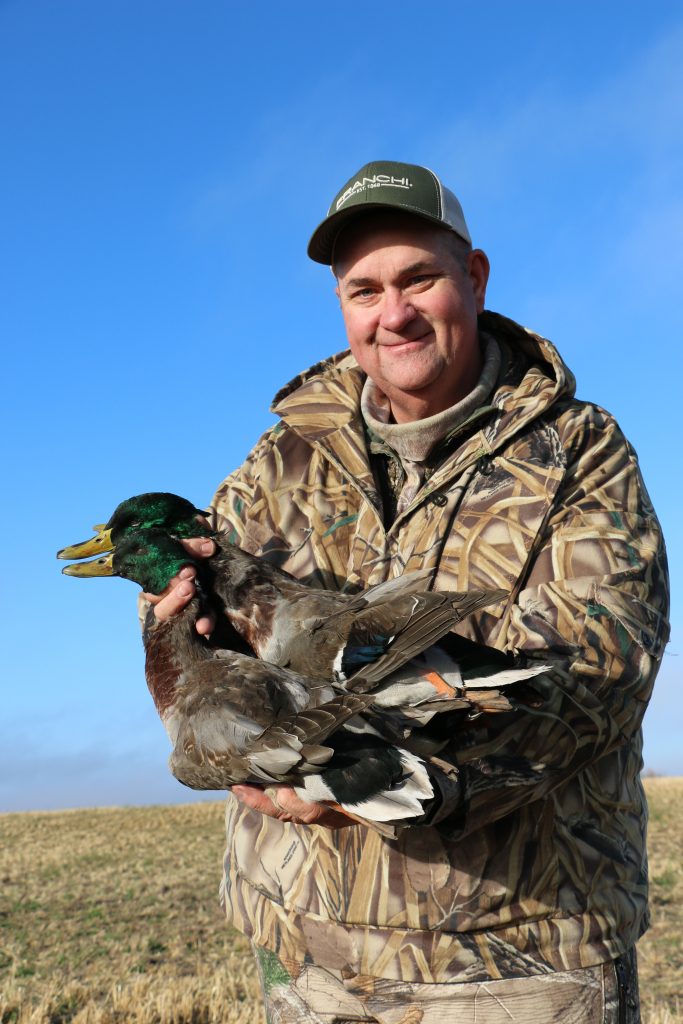
Ducks fall under two general biological umbrellas: divers and puddlers, or dabblers. Puddle ducks, as the name implies, are built to feed in shallow water. They tip their rear ends up and dip their heads underwater to access submergent vegetation or invertebrates. Many species also feed in dry agricultural fields, much like geese, as they easily walk on land. Their powerful legs and wings let them spring from the water and take flight immediately. Divers, conversely, are built for life on the water. Their legs are set farther back on their bodies, and they’re relatively clumsy on land. As their name implies, they dive under the water’s surface to feed on vegetation, crustaceans, mollusks or invertebrates. Unlike puddlers, they run across the water’s surface to become airborne (with a few exceptions).
Some basic differences between puddlers and divers can help start the identification process. In flight, puddle ducks have slower wingbeats than divers. Further, divers often fly relatively lower to the water than puddle ducks, though not always. Also, many diving duck species have prominent areas of white on their plumage. But to positively identify ducks by species and sex, you must drill down to specifics.
Puddle Ducks
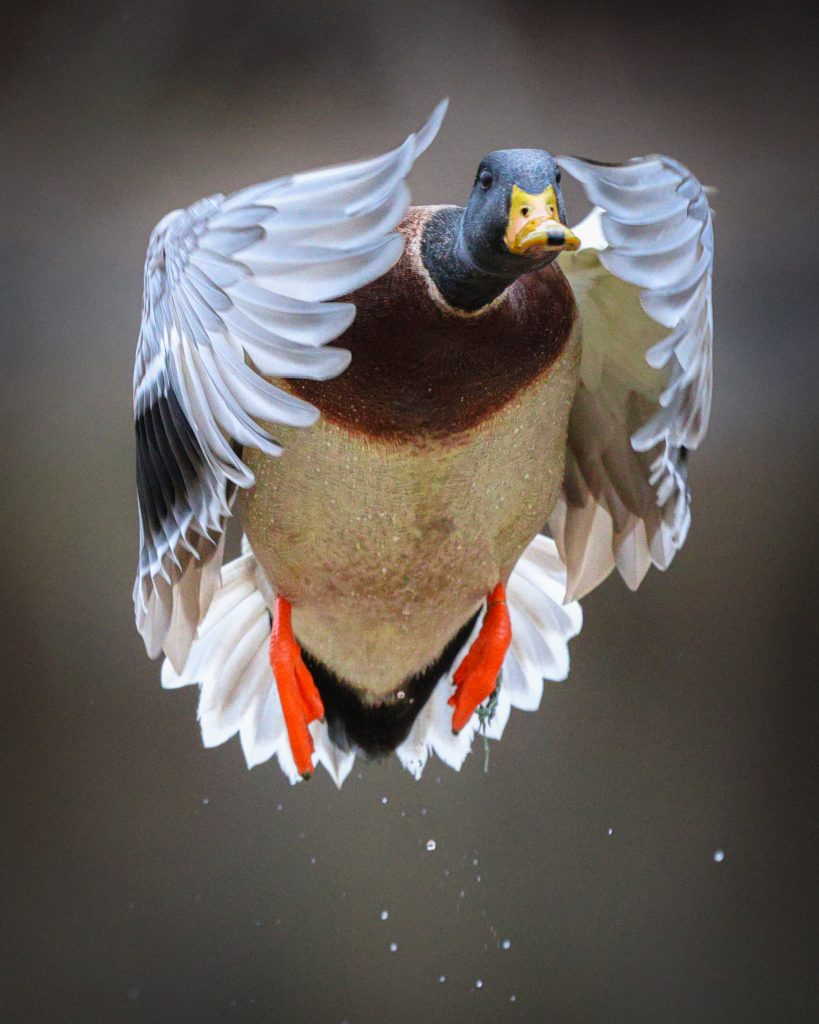
Mallards: North America’s most abundant duck has a large body and long wingbeats. At close range, the green heads of drakes distinguish them from the relatively drab hens. Further, drakes have chestnut-colored breasts, which lets you identify them in low light. Be careful, though: Some hens also feature darker breasts, so it’s not a sure-fire distinguishing feature. When in doubt, hold fire.
Black ducks: Most common in the Northeast and Midwest, black ducks look very much like mallards. During bright days, however, you can easily pick out the black duck’s much darker body color. Here’s another trick: Black ducks appear to have a slight silver coloration on the underside of their wings, as opposed to the whiter tone of mallards. This can help you identify them in flight during poor light.
Pintails: You can identify these graceful ducks by their angled, gull-like wings and, of course, wedge-shaped tail. When birds are closer, you can pick out the white on drakes. Hens can be more difficult to discern, but their wings, slender profile and pointed tail usually give them away.
American wigeon: These stocky ducks have white oval bellies, which you can notice easily on flying birds. Gadwalls also have white bellies, but they’re longer and more mallard-like than the shorter, squatter wigeon. If you see lots of white on the wing, it’s a drake wigeon. Gadwalls have white speculums (coloration on secondary wing feathers), but drake wigeon show far more white. Wigeon are often vocal, and you can hear their high-pitched whistling at a distance.
Gadwall: Again, look for white speculums and light oval bellies. These birds are also called gray ducks, and you’ll notice that dark coloration on drakes. Hens look very similar to hen mallards but with a white belly. In flight, drakes often make a distinctive “blat” call you can hear at long distances.
Shovelers: Spoonbills look quite distinctive up close, but they can fool you in flight. I’ve seen folks confuse them with teal or even diving ducks. However, you can easily identify shovelers by the silhouette of their head and neck. These relatively small, slender ducks appear to have a kink in their necks — neck raised, and long head pointed slightly downward. You can also notice the white breast of drake spoonies when they fly close.
Wood ducks: These medium-sized ducks have a long, rounded tail, which lets you easily recognize them in flight. When they fly overhead, you’ll notice their dark breast and white underbelly. Their flight is typically twisting and erratic, and hens often make a “hoo-eek, hoo-eek” squeal in the air.
Blue-winged and green-winged teal: These ducks are much smaller than other puddlers, so you can really only confuse them with each other. Greenwings have a light belly and appear blockier yet more agile in flight. Bluewings are drab during most of the fall migration, but the blue patches on their wings are often visible.
Divers
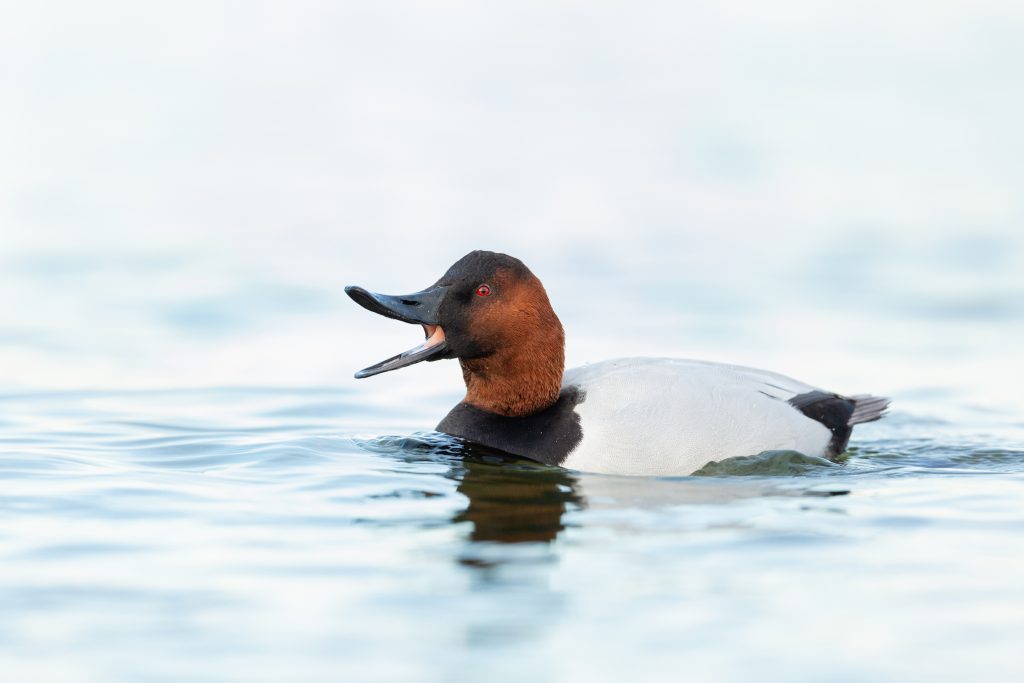
Canvasbacks: You can identify the king of ducks by their long necks and wedge-shaped heads. Redheads have similar coloration but appear much blockier and stockier in flight. Further, nothing shines as white as a bull canvasback in breeding plumage.
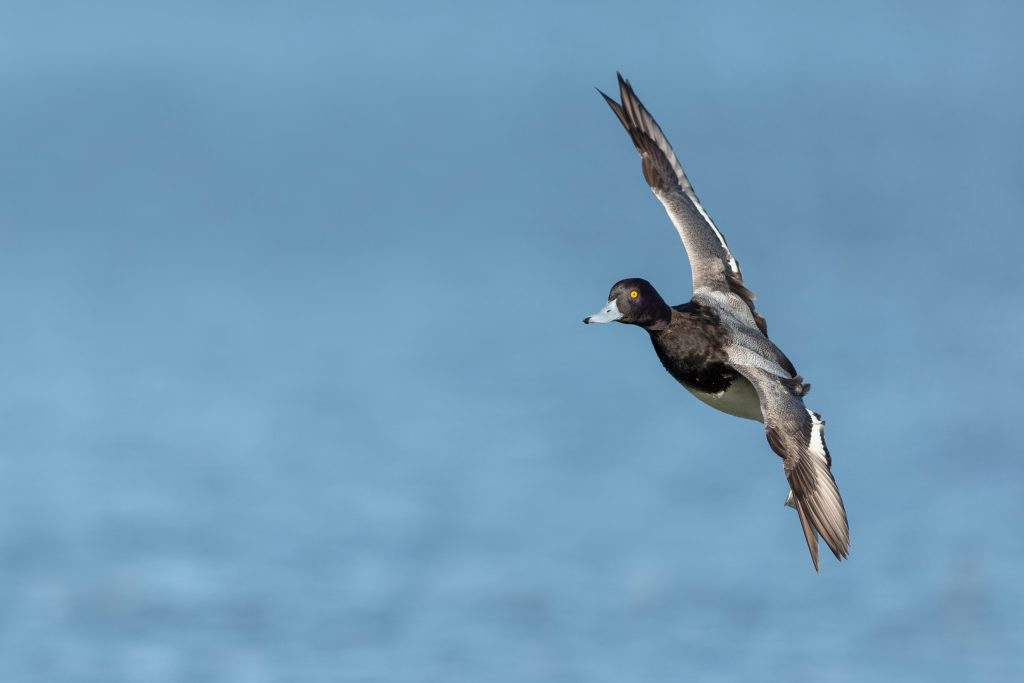
Scaup: Commonly called bluebills, drakes of this species feature quintessential black-and-white coloration. Hens are drab, and you can confuse hens or immature birds with hen redheads or hen ringnecks, but the white marking near the bill of a hen scaup gives it away. Scaup come in two species: greater and lesser. It can be difficult to distinguish them in flight, but greater scaup are noticeably larger. At relatively close range, you might see the white on their wings. If it extends to the primary flight feather, the bird is a greater scaup.
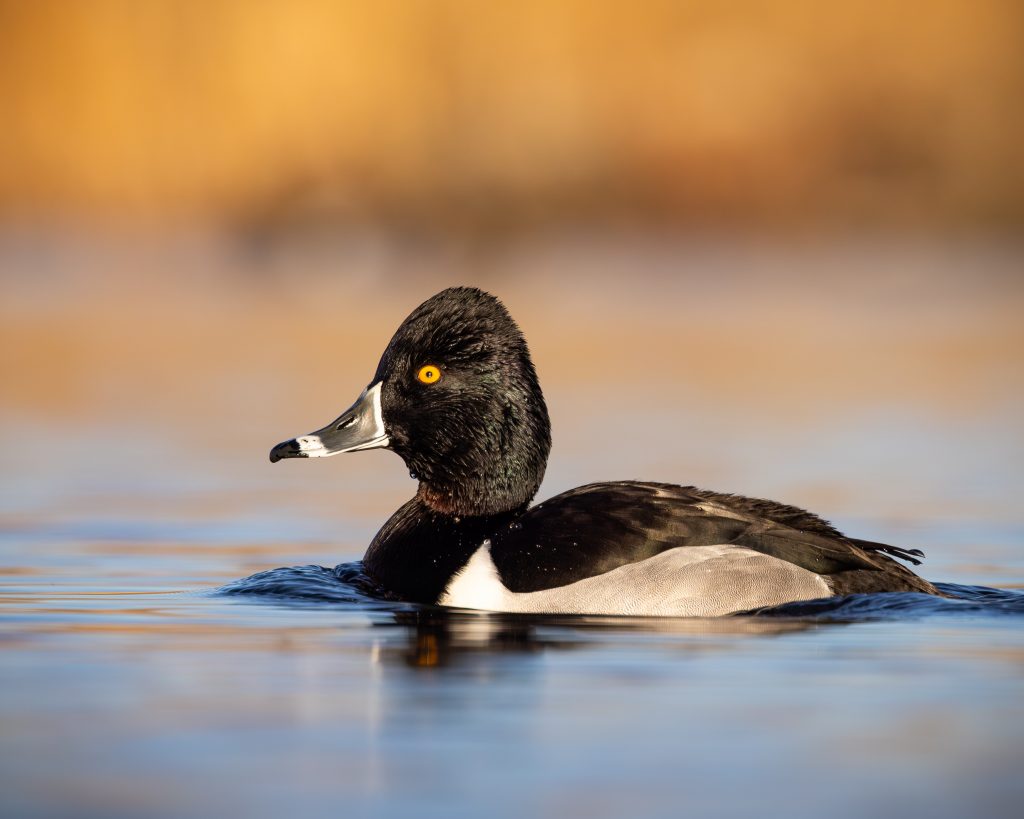
Ringnecks: You might confuse these ducks, also called ringbills or blackjacks, with scaup at a distance. However, the wing markings and sides of scaup are white. Ringnecks have gray wing bars and gray flanks.
Redheads: Drakes of this species are fairly easy to identify, as their namesake red noggins give them away. You might confuse hen redheads with hen scaup and hen ringnecks, especially if they fly right at you during cloudy days. However, redheads are larger than both and don’t have the white facial markings of a scaup.
Buffleheads: Nothing else looks like the small, squat, black-and-white drake bufflehead, also called a butterball. However, in low light, you might confuse a hen bufflehead with a small ruddy duck, another small diver species. Buffleheads are far more powerful and graceful than ruddies. Further, ruddies almost never twist, turn or dive in flight like buffleheads.
Mergansers: These come in three varieties: common, red-breasted and hooded. All frequent big water, but hoodeds are also common along streams and in backwaters. Typically, the long, lean flight profile of a common or red-breasted merganser gives it away. Also look for the narrow head and telltale white on their wings and bodies. You might mistake hooded mergansers for buffleheads sometimes, but the little mergies typically fly higher than butterballs and twist more in flight.
Goldeneyes: These unique ducks are relatively easy to identify. Their eerie whistling wingbeats — goldeneyes are also called whistlers — often distinguish them in flight, and their blocky build and round-looking head frequently give them away. The stunning black-and-white plumage of mature drakes is visible at long distances. Whistlers are among the hardiest ducks, typically not migrating until most waters are frozen, and hanging around northern latitudes through winter in any open water available.
Be Sure
Sometimes, you might fail to identify ducks as they zip past. When that occurs, it’s usually best to hold fire, as you don’t want to make a mistake with a hen mallard, hen pintail or, worse, a merganser. Just do better with the next flock. With practice and time on the water, you’ll soon positively identify ducks like a pro.
